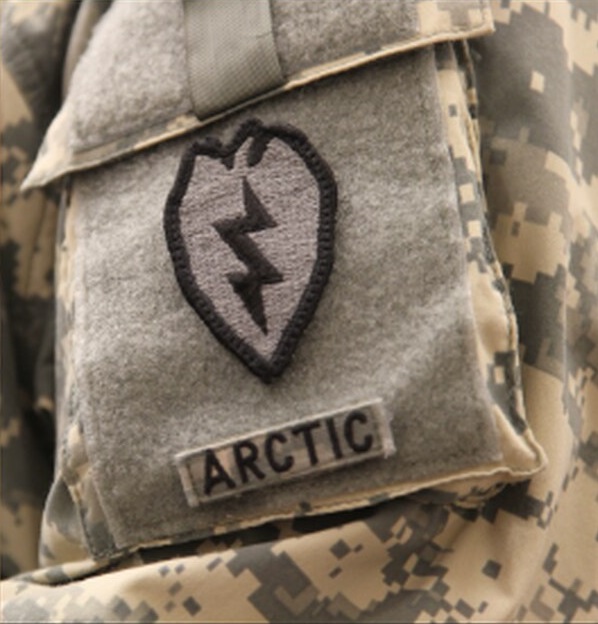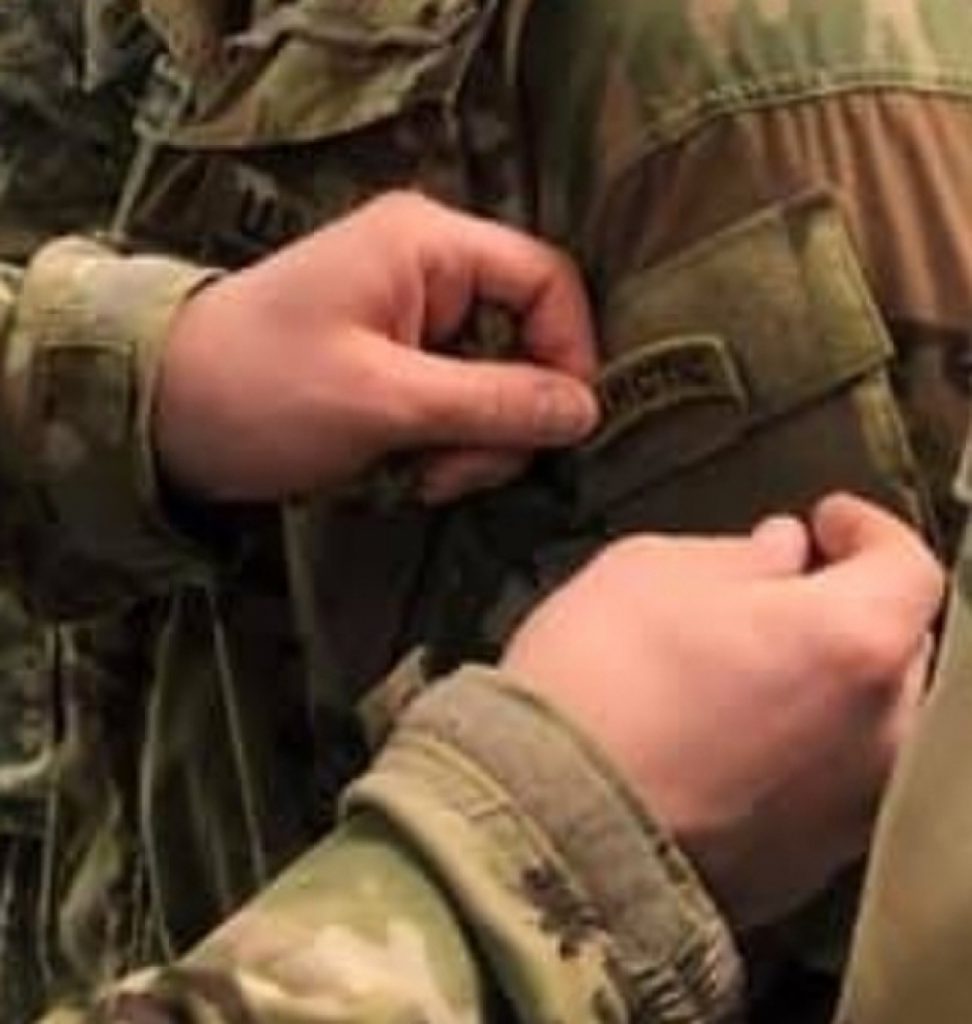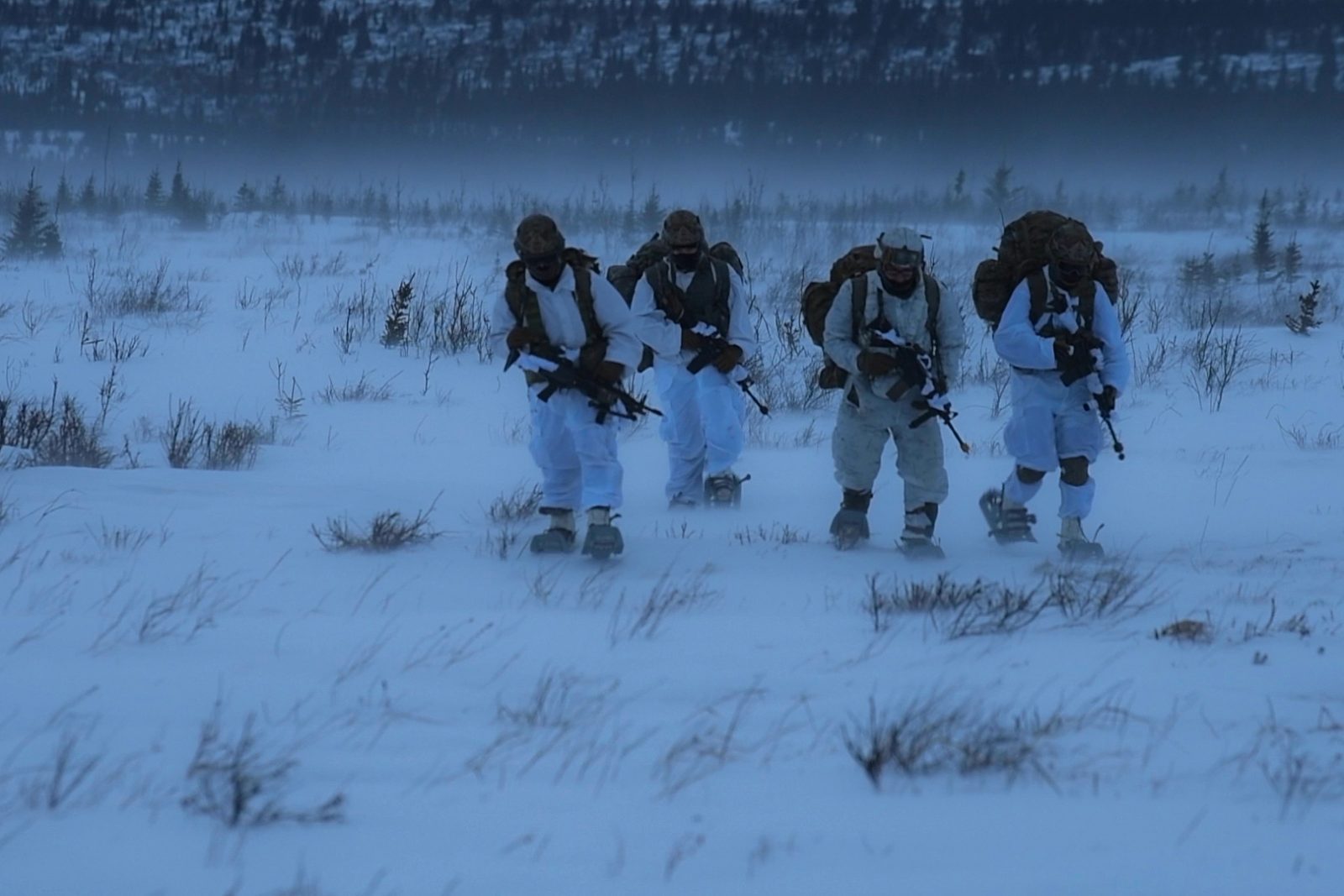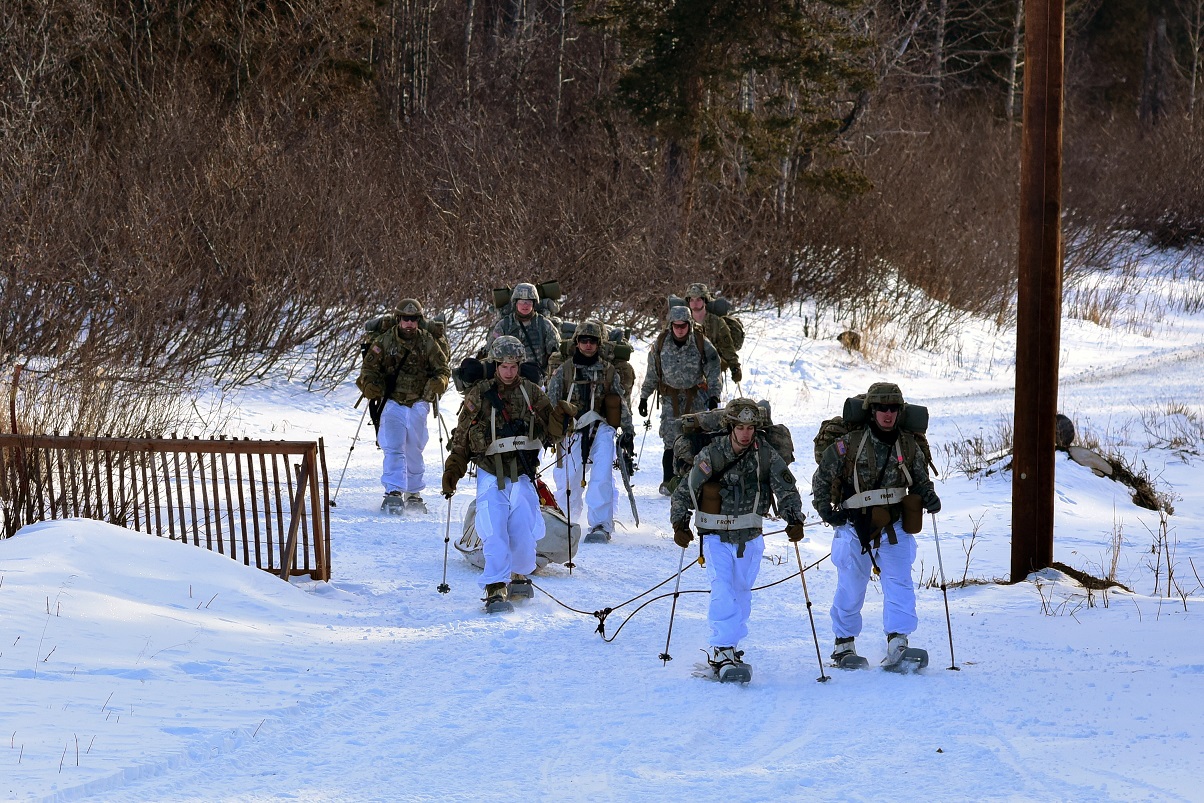The Arctic Tab, a visual representation of a Soldier’s ability to train and thrive in cold environments, just got an upgrade. Not only does the tab have a new look, it can now be worn outside the confines of the Last Frontier thanks to a new U.S. Army Pacific policy.
According to the policy, approved in February 2020 by USARPAC Commander, Gen. Paul J. LaCamera, Arctic Operations-qualified Soldiers assigned to USARPAC units, including major subordinate commands and direct-reporting units, can now wear the Arctic Tab while serving at USARPAC installations throughout its areas of operation. However, wear is not authorized when Soldiers are on temporary duty or deployment status outside the USARPAC theatre.

The new policy does more than expand where and how the Arctic Tab is worn. It reflects the importance of the U.S. Army’s ability to train and fight in an arctic environment.
“I think what makes U.S. Army Alaska and our units unique is that we are the Army’s proponent for cold weather training,” said Maj. Gen. Peter B. Andrysiak Jr., U.S. Army Alaska commander. “We not only live here; we thrive here, and I want to make sure the tab properly recognizes our unique expertise.”

Originally worn below a Soldier’s unit patch (shown above), the Arctic Tab now rests above the patch, joining other prominent skills tabs such as the Ranger or Sapper Tabs. The previously rectangular-shaped tab was redesigned in November 2019 and now also sports the familiar rainbow arc of similar tabs.

A group of Soldiers who graduated the Northern Warfare Training Center’s Cold Weather Leaders Course, Jan. 17, 2020, became the first to wear the redesigned tab. The NWTC trains units and leaders in cold weather and mountain operations to increase warfighting capabilities. Learning those skills is vital for USARAK leaders at every level.
“As a leader, it is important I know and understand the harsh, arctic conditions and the impact it can have on Soldiers and equipment,” said Capt. Robin Furrer, a recent graduate of CWLC, “Soldiers operate and move differently when it is minus 25 out, and our equipment does as well. So it is important for us to have the knowledge to plan, make decisions, and adapt to these conditions.”

Although the look and placement of the tab has changed, what it takes to earn it remains the same. Soldiers earn the Arctic Tab after completing either the CWLC or the Cold Weather Orientation Course held at the Black Rapids Training Site run by USARAK’s NWTC instructors. Upon graduating either course, Soldiers are qualified to implement basic, cold weather and ski training programs within their units to help mitigate the unique challenges they face while operating in harsh conditions.
“Anything can fail, even on the coldest days,” Steve Decker, an NWTC instructor, explained. “Soldiers attending these cold-weather courses are taught ways to get around those failures.”
CWLC is a 15-day course where squad- and platoon-level leaders hone the knowledge and skills required to perform small-unit operations in cold, snow-covered terrain. Soldiers learn everything from the basics of standing and moving on skis and snowshoes to a full range of arctic survival skills.

CWOC is a four-day course for commanders and staff officers to become more familiar with the knowledge and skills required in successfully planning and conducting operations in an arctic environment. Emphasis is placed on the effects of cold on personnel and material, the effects of a winter environment on operations, and planning considerations unique to the winter battlefield and cold regions. Cold weather risk-management procedures are stressed throughout the course.
“From jumping into minus 100, bitter, cold, exiting the aircraft over Prudhoe Bay, to conducting live-fire exercises at minus 30 in the Donnelly Training Area, the Northern Warfare Training Center’s team of professionals ensure our Soldiers are ready to deploy, fight, and win in any arctic environment,” said Command Sgt. Maj. Jeffrey Dillingham, USARAK’s senior enlisted leader. “We are the first line of defense in the West and the last line of defense in the Pacific. We are ready, we are arctic warriors, and we are Arctic Tough.”
—
Story by Spc. DeMarco Wills, United States Army Alaska
